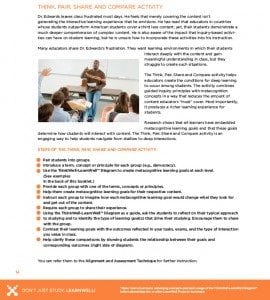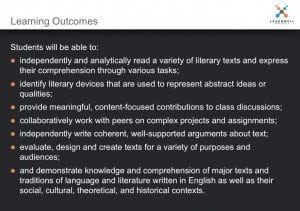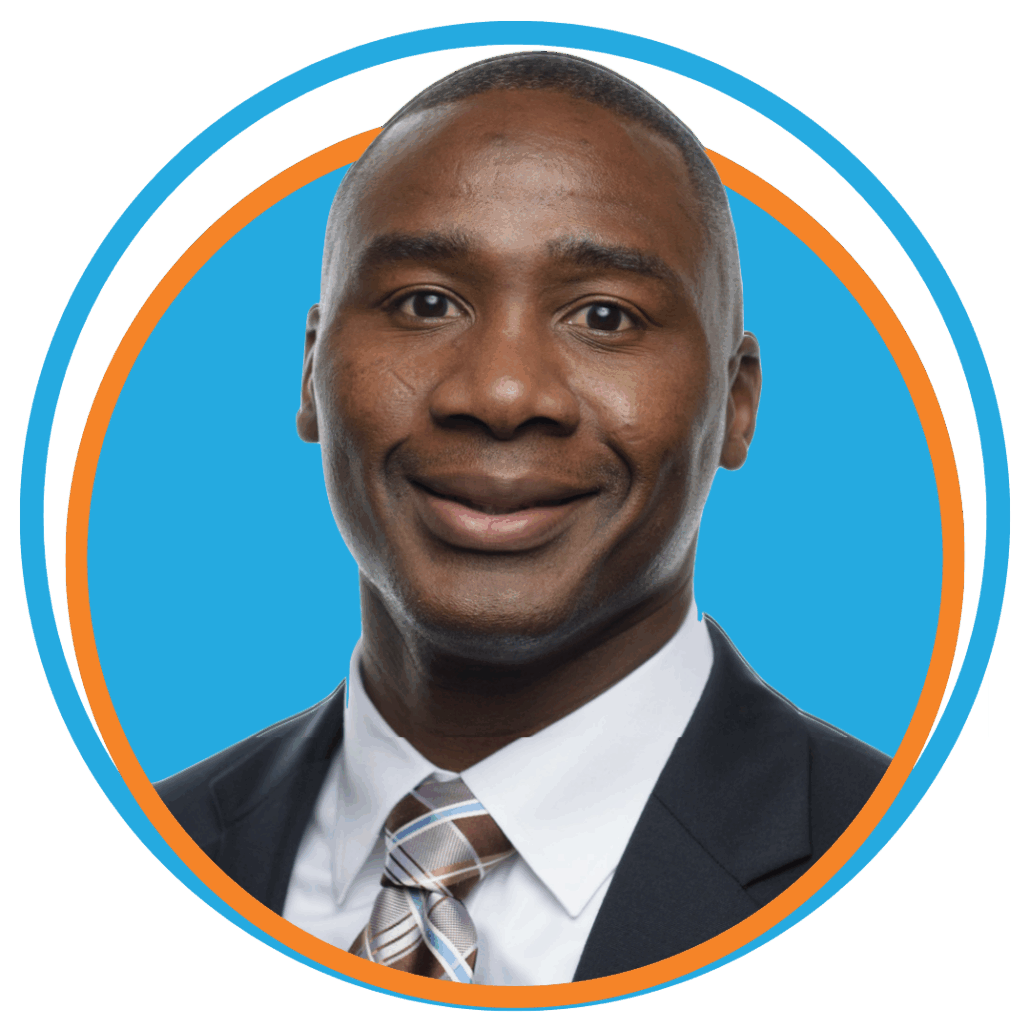[et_pb_section admin_label=”section”]
[et_pb_row admin_label=”row”]
[et_pb_column type=”4_4″][et_pb_text admin_label=”Text”]This is part II of a two part article. Click here for Part I
A few years ago, educators throughout the country began suggesting that group study was counterproductive. This message made its way to my campus. Referencing purported “research” from a widely distributed book, some faculty were actively discouraging students from studying in groups. These well-intentioned colleagues claimed that the latest research showed students who study in groups actually perform worse than students who study individually. (I won’t mention the book or the specific research because I believe those citing the research misinterpreted the data.)
Even worse, these faculty members tacked this “fact” onto the ever-growing list of research reasons why today’s generation of students are apathetic, stupid, and downright suck. I must admit that I have little patience for this oppressive nonsense! But I’ll step off of my soapbox and save my thoughts on this matter for another article.
Learning is a team sport. The very notion that studying amongst peers negatively impacts learning is absurd. That would be like saying faculty who are active in professional learning communities are worse off than those who are loners. It defies basic logic! To turn the tables a bit: Would professors be so inclined to believe that students learn much better alone than in a class? No, faculty would quickly assert that students learn much better within a class environment, whether in a classroom or online, than individually.
Yes, students who engage in ineffective dialog while studying in groups won’t learn much. However, students who collaborate with their peers in the right ways will likely learn better than if they study alone. Rather than discouraging peers and students from engaging in group studying, the research should have prompted the anti-group studying “evangelists” to ask, How can we help students study effectively in groups?
Friends with Benefits
As a way of countering the anti-group studying message, I developed a series of workshops that showed students and faculty how to study effectively in groups. I titled the sessions Friends with Benefits as a way of appealing to students. And yes, the turnout was great!
Anticipating resistance, I began conversing with a group of influential faculty and staff who had bought into the anti-group studying message. I asked them how they stayed on top of research in their respective field, how they learned about best practices, and so forth. Nearly all of their answers involved their networks of colleagues. They referenced a wide range of methods, including conferences, listserves, professional learning communities and peers. Each of these methods is an extension of these professional’s networks. Their own experiences supported the idea that collaboration enhances a person’s competence.
Students, like professionals, need a strong network to push, pull and expand their knowledge and skills. When conducted properly, group studying should provide such a network. When done improperly, studying with peers can indeed be useless.
The workshops provided students with an alternative to the familiar plan of action whereby each student studies the same material on his or her own and then tests each other’s knowledge – typically shallow knowledge –during group time. One of the primary goals of the sessions was to help students leverage each other to learn faster, while going further and more deeply into the content. This goal was largely accomplished!
The Friends with Benefits sessions featured specific strategies for organizing the participants’ study content around The ThinkWell-LearnWell Diagram. The workshops taught audience members how to identify general course and specific task outcomes and how to organize these outcomes around specific levels of thinking. They were instructed to divide tasks not around content, but around outcomes. Ultimately, participants determined which group member would work toward which outcome(s) during his or her individual time. When the group reconvened, members had much more meaningful contributions to offer.
The students were most impressed with how efficiently they were studying. In their post-session surveys, many of the participants commented that they realized they were studying much more deeply, and they were better able to express the material they’d studied.
 I even shared the activity to the right with educators. It’s included in the ThinkWell-LearnWell User’s Guide.
I even shared the activity to the right with educators. It’s included in the ThinkWell-LearnWell User’s Guide.
Professors were able to strategically incorporate ways of thinking about content into their instruction and allow students time to work in groups to practice this type of thinking. The result was students who not only worked to merely acquire the content, but who, when away from class, also could extract deeper meaning from the material. This is the type of win-win scenario I like!
Mentoring
 Many professionals become involved in a mentoring relationship. Some of these unions form organically while others are formally organized. Regardless of how the relationship comes to be, mentoring is a useful vehicle for increasing novices’ competence (among other things).
Many professionals become involved in a mentoring relationship. Some of these unions form organically while others are formally organized. Regardless of how the relationship comes to be, mentoring is a useful vehicle for increasing novices’ competence (among other things).
At Lenoir-Rhyne University, we, like many other institutions, realized the need to help first-year students transition more successfully into university life. I was part of a team of faculty, staff and students who developed our course assistant program, which embeds upperclassmen in each of our First Year Experience (FYE) classes.
FYE instructors realize the impact that a course assistant (CA) can have on students; therefore, each CA is carefully selected. CAs come from a unique pool of students. They are academically successful and mature, while still able to relate to freshmen. This is a unique characteristic, since many upperclassmen have forgotten how they were as freshmen.
CAs don’t teach (at least not frequently). Rather, they help students successfully navigate their way into the college environment. Our FYE program has ten specific “acculturation” components that are integrated into the academic curriculum. These topics range from Community and Sense of Belonging to Navigating the Core Curriculum to Thinking and Learning in College. CAs, as students who have proven themselves in these areas, help less experienced students take full advantage of what the university offers.
CAs are providing structured mentorship by simply being integrated into the class, and informal mentoring to students with whom natural mentor relationships evolve. Below are three specific ways that they serve in this capacity.
Accompanying
CAs attend most of the FYE classes. Being with the students in the same class provides a “we’re in this together” camaraderie cannot be manufactured. Mentoring is a voluntary relationship. Consistency creates the opportunities for the relationships to develop, be strengthened and be useful.
Street Cred’
We all know that students may listen to instructors, but they hear their peers. CAs provide street credibility for crucial points that educators convey. Like a sixth sense, these upperclassmen know which phrases to use and what tone to strike, and they have the ability to discern the optimal times to broach topics.
Sowing
A primary goal of our FYE program is to provide students necessary literacy skills that will sustain them throughout their college career. It is the only course that spans two semesters and is assigned six credits. The course is reading, research and writing intensive. Since most students enter college with a view of themselves as successful learners (or else why would they have been admitted, they may tell themselves), they often underestimate the type of academic challenge college presents. CAs play a key role in preparing students for this increased rigor oftentimes before the students are ready to change. In essence, CAs sow seeds of relevance within students. This is an important step because students tend to initially resist the challenge presented in the FYE course. However, students tend to appreciate the course as they experience the difference in other courses.
The FYE program was repurposed a few years ago. This change involved transitioning from a one-credit course to the six-credit course that I earlier described. The new model has produced remarkable improvements that have been supported by both in-house and national assessments.
CAs play a significant role in the FYE course’s success; and the students do not shy away from sharing their appreciation. CA’s frequently receive email messages, texts, and in-person expressions of gratitude from students who have later come to realize the impact the course has had on their college experience.
Resources
 Every professional needs resources. Imagine trying to teach a class without a whiteboard or blackboard. What if you also didn’t have a projector? And what if you didn’t have texts to use? Okay, not having all of these tools is a bit extreme. However, I’m sure you have been in a teaching situation in which you lacked at least one of these teaching aids, and I’m sure it made your task more difficult.
Every professional needs resources. Imagine trying to teach a class without a whiteboard or blackboard. What if you also didn’t have a projector? And what if you didn’t have texts to use? Okay, not having all of these tools is a bit extreme. However, I’m sure you have been in a teaching situation in which you lacked at least one of these teaching aids, and I’m sure it made your task more difficult.
What about students? What resources do they need?
This final leg of the Transferring Competence article not only lists some of the resources that students need, but more importantly, it shares thoughts on how they are misused and often altogether neglected.
Syllabus
A thoughtfully constructed syllabus minimizes misunderstanding and provides “you and your students with a common plan and set of references” (O’Brien, Millis, & Cohen, 2008). Unfortunately, few educators know how to create such powerful documents. Equally bad is the fact that those who do actually create them seldom maximize their potential.
Students need a thorough, yet succinct syllabus. When constructed properly, this document alone can help students with crucial fundamental tasks: determining general course and subject-specific learning outcomes, figuring out the various course tasks, and, of course, the grading scale and assignment dates.
Below is an example of a “super-charged” version of course learning outcomes. These are metacognitive, task-specific learning outcomes. In professional development events, I often lead participants in an exercise that helps them develop learning outcomes that fit this format. These statements fuse course outcomes with ways of thinking and organize them around explicit tasks.

These learning outcomes provide a robust framework for students to figure out what content they are responsible for learning, which types of thinking they will need to sufficiently express the content, and the task(s) on which they’ll be required to demonstrate their knowledge.
Textbook
The textbook is one of the most underappreciated resources available to students. I’ve noticed two reasons students don’t use textbooks as regularly as they should: 1) They don’t see faculty using them, and 2) they don’t know how to effectively use textbooks.
When instructors assign books, yet don’t use them in class, students receive a potent message that the books are not needed. Even worse, some well-intentioned educators will attempt to condense the content into notes or presentation slides, and then tell students that their assessments are based upon these documents.
Educators who attempt to present all of the content in note form and then instruct students that their tests are derived from the notes strip students of opportunities to develop needed analytical and evaluative skills.
Professors should never direct students away from textbooks. Instead, educators should use the books in concert with the class notes and/or slides. I had an opportunity to witness this balanced approach during a recent classroom observation. The instructor had created her own notes and disseminated them to the students. She included the corresponding textbook page(s) with each respective section of notes. This ensured that students understood that the class material and the textbook were both needed to sufficiently learn the content. Additionally, she referenced specific pages where students could further develop their understanding outside of the class.
I’ve presented only six ways that lessons can be drawn from our work experience to improve student academic performance. I’m sure there are other avenues of work that apply to students. We’d love to hear your ideas. Please add them to the message box.
Works Cited
O’Brien, J. G., Millis, B. J., & Cohen, M. W. (2008). The Course Syllabus: A Learning-Centered Approach. San Fransisco, CA, USA: Jossy-Bass.
[/et_pb_text][/et_pb_column]
[/et_pb_row]
[/et_pb_section]



2 comments
Jeff
Great article! I enjoyed reading about improvements that both students and professors can make in the classroom. I wonder if further resources could be suggested in your articles. For instance, you claim that textbook use is essential. However, what does research suggest is the best way to promote textbooks? Or even about working in teams. Great thoughts!
Leonard Geddes
Hi Jeff,
There are numerous research articles pointing to the necessity of students to read textbooks, but the most recent and most comprehensive literature is compiled in the Handbook of College Reading and Study Strategy Research, published in 2008. Considering the research and my own experiences, I would provide the following advice:
1) Make students aware that the content presented during class is covered in more depth in the texts. This is a critical point of emphasis as many students believe that simply knowing what was covered in class is sufficient. Also, some school districts do not provide students books, so students are not accustomed to the idea of out-of-class reading of textbooks.
2) The prereading phase is most important. Students must learn ways to preread the text. Prereading, when done well, provides a framework upon which students can hang the content on when reading. Some people use the SQR3 (Survey, Question, Read, Recite, Review) method or other iterations. (You can find out more by Googling “SQR3”). However, I use a technique that I’ve developed called Textbook Navigation. While I can fully explain it here, it changes the very essence of how students interact with text. It helps students apply the proper thinking levels to respective segments of text to ensure that they get out of the segments what the author intended. Students who have used it report that it helps them better organize the material in the minds, decreases the amount of time they spend reading and improves their comprehension.
3) Working in teams is great when done properly. Students must first understand the outcomes embedded within a task, albeit writing, public speaking or reading. (Educators play a huge role in whether students understand the outcomes.) Assuming students clearly understand the outcomes, then they can divide different tasks up among the group.
Good comment!